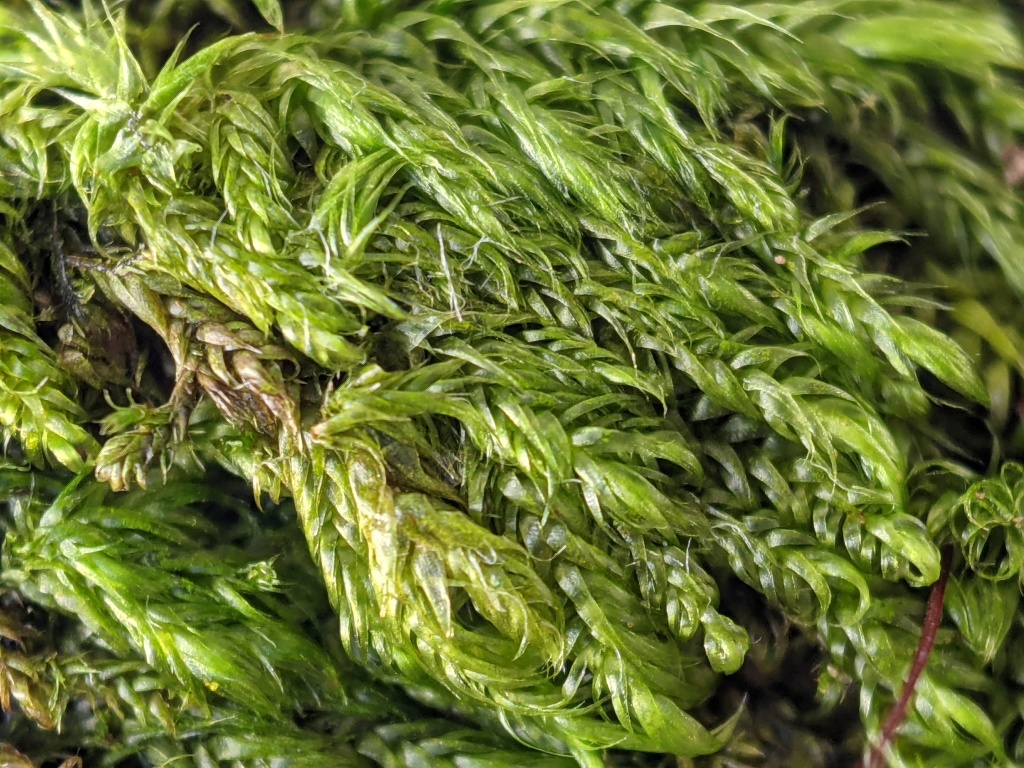Warburgiella leucocytus
(Müll.Hal.) B.C.Tan, W.B.Schofield & H.P.RamsayAutoicous. Mats on logs and tree trunks, pale green to pale yellow-brown. Stems to 4 cm long, subpinnately and densely branched, red-brown, with red-brown rhizoids frequent along underside. Leaves strongly falcate-secund, lanceolate, 1–1.8 mm long, 0.2–0.35 mm wide; apex acuminate; margins entire or slightly denticulate near apex, plane or narrowly recurved near middle; cells linear, 40–75 (–120) μm long, 4–7 μm wide, smaller near apex and base where as short as 32 μm long, weakly papillose; alar cells abruptly differentiated, 3 or 4, inflated, oblong-rounded, 32–63 μm long, 12–28 μm wide, with a few subquadrate or oblong cells above. Perichaetial leaves acuminate to abruptly short-cuspidate, strongly toothed near apex. Setae 10–20 mm long, red, mammillose. Capsules oblong or ellipsoid, horizontal or pendent, straight, 0.9–1.5 mm long. Operculum rostrate from conic base, 0.9–1.5 mm long. Spores 10–15 μm long.
VVP, CVU, GGr, HSF, HNF, OtR, HFE, VAlp. Mostly in rainforest and fern gullies in the Otways, Dandenong Ranges, Yarra Ranges to Baw Baw Plateau, and East Gippsland but with some outlying records further west from sclerophyll forest and beside creeks and swamps. Also QLD, NSW and Tas. New Zealand and South America.
 Spinning
Spinning
